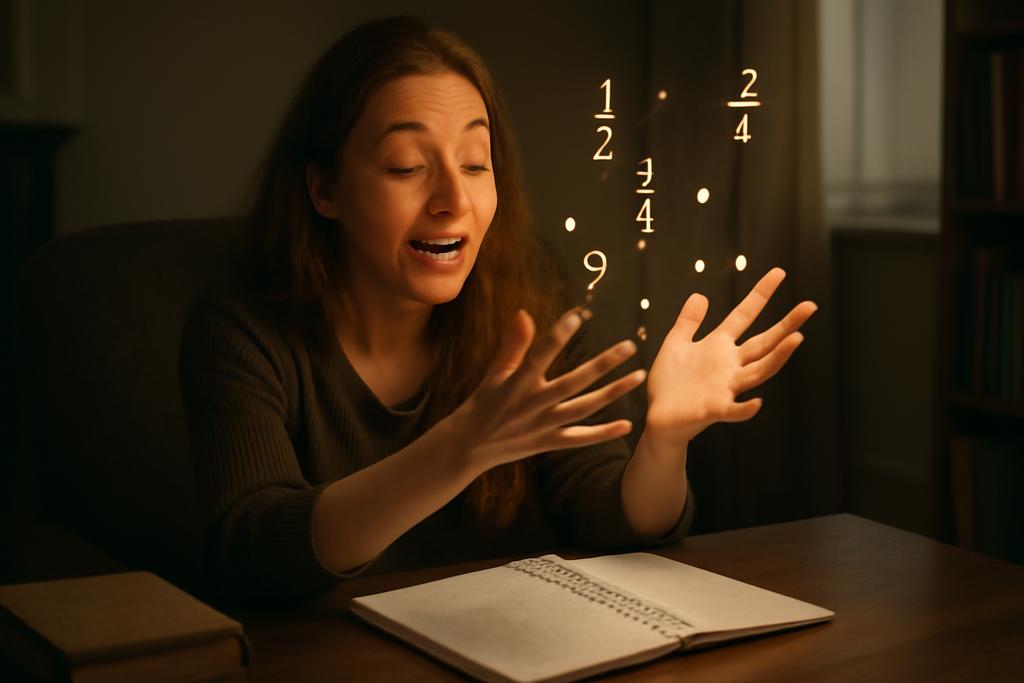Chasing Numbers with a Greedy Heart
At first glance, the idea seems simple: take a number you want to approximate, and build it up step by step by adding or subtracting fractions—like 1/1, 1/2, 1/3, and so on—choosing at each step whether to add or subtract to get closer to your target. This process, known as the greedy approximation by signed harmonic sums, might sound like a child’s game with fractions, but it hides a deep and surprising mathematical story.
Stefan Steinerberger from the University of Washington has recently extended a remarkable result about this process, revealing that it converges to almost any real number faster than anyone expected—faster than any polynomial rate you can name. This isn’t just a quirky curiosity; it touches on the heart of how infinite sums behave and how we can approximate numbers in ways that defy our usual intuition.
The Puzzle of the Harmonic Series and Its Signed Cousin
The harmonic series, the sum of 1 + 1/2 + 1/3 + 1/4 + …, is famous for diverging—it grows without bound, albeit very slowly. But what happens if you start flipping signs, adding or subtracting each term to get closer to a specific number? For example, the alternating harmonic series 1 – 1/2 + 1/3 – 1/4 + … converges to log(2). What if instead of following a fixed pattern, you choose the sign at each step to greedily get closer to your target number?
Previous work by Bettin, Molteni, and Sanna showed that for almost every number, this greedy approach doesn’t just inch closer—it leaps closer with superpolynomial speed. That means the error between your approximation and the target number shrinks faster than any power of 1/n, where n is the number of terms used. It’s like having a magic wand that refines your guess with breathtaking efficiency.
Beyond 1/n: Moments and Measures
Steinerberger’s new work asks: what if instead of the harmonic sequence 1/n, we use more general sequences that come from the moments of measures supported on the interval [0,1]? Moments are a fundamental concept in mathematics and physics, capturing essential features of distributions—think of them as fingerprints of shapes or probability clouds.
By considering sequences defined as moments of measures, Steinerberger shows that the superpolynomial convergence phenomenon isn’t a fluke of the harmonic series but a robust feature of a broad class of sequences. This includes sequences that decay slower or faster than 1/n, as long as they come from these moment constructions.
Why Does This Matter? The Dance of Signs and the Thue-Morse Sequence
One might expect that choosing signs greedily would be a straightforward process, but the reality is more intricate. The sequence of signs can exhibit complex patterns, including appearances of the famous Thue-Morse sequence, a sequence known for its deep connections to combinatorics, fractals, and even theoretical computer science.
This interplay means the approximation process is not just a mechanical game but a dance with hidden symmetries and structures. Understanding these patterns helps mathematicians grasp how infinite sums can be rearranged and manipulated to achieve astonishing convergence rates.
Exceptional Numbers and the Limits of Approximation
Not all numbers are equally friendly to this greedy approximation. There exists a countable set of exceptional numbers for which the superpolynomial convergence fails. For example, the number log(2) behaves differently due to the alternating nature of its harmonic series expansion.
But for almost every other real number, Steinerberger’s results guarantee that infinitely many steps in the greedy sequence will approximate the number with an error smaller than any polynomial rate you choose. This is a powerful statement about the ubiquity of fast approximation in this setting.
Implications and Open Questions
Steinerberger’s extension opens doors to new questions: can similar phenomena be found in higher dimensions? What about other types of sequences or measures? The work hints at a rich landscape where number theory, analysis, and dynamical systems intersect.
Moreover, the methods developed to prove these results—careful induction on scales and leveraging the structure of moment sequences—offer tools that might find applications beyond this specific problem.
In the End, a New Lens on Approximation
This research reminds us that even the simplest operations—adding and subtracting fractions—can conceal profound mathematical truths. By peeling back the layers, Steinerberger shows us that the way we approach numbers, the sequences we choose, and the patterns we uncover can transform our understanding of convergence and approximation.
So next time you think about summing fractions, remember: behind those humble terms lies a universe of surprising speed, hidden order, and mathematical elegance.










